https://www.youtube.com/watch?v=YtVsZg5gjTc
The Greatest Forgotten Chess Puzzle
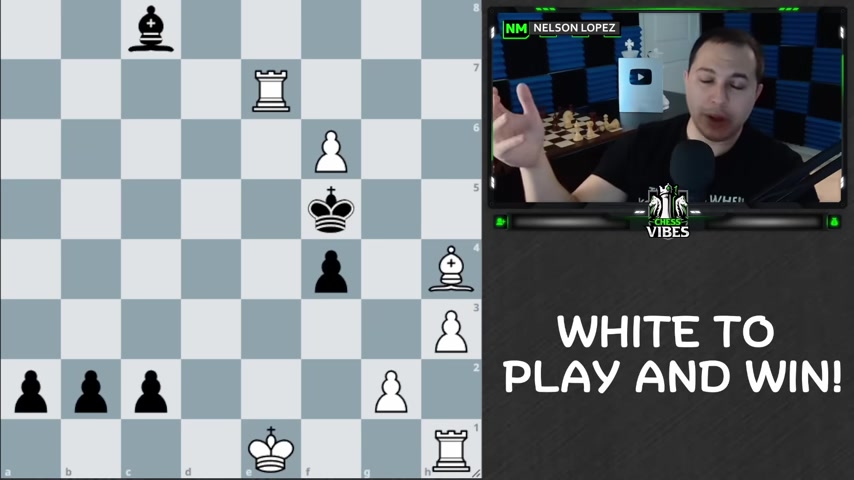
Hey guys .
So if I ever come across a truly fascinating puzzle , I usually will save the fen and then I'll also record like who composed the puzzle or where did it come from ?
For some reason , I saved this puzzle when I saw it , but I didn't record any details that go along with it .
I don't know if there were no details or I just forgot to do that or I don't really know what happened .
But for that reason , I'm considering it a forgotten puzzle because I have no idea where it came from .
If anybody knows , please let me know .
But regardless , I'm really glad that I at least saved it because it's a really fun one .
And I think you're going to enjoy this .
So if you would like to pause and think through how in the world can white win this position .
And just to make you aware of the big problem , black is going this direction , which means these pawns are all about to become queens with check on the king .
It's white to play and win before I say anything else .
If you'd like to pause , go ahead and do that .
And then we'll take a look .
Right .
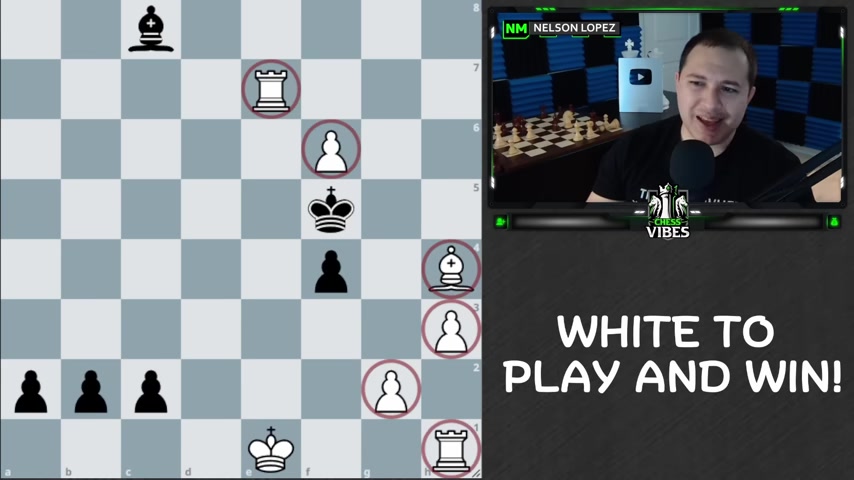
So when we first look at this position , it looks pretty hopeless for white because blacks about to get not just one , probably two or even three queens with check and white doesn't have a lot going for them .
Yes , you have this pawn here , but it's still two squares away from , from becoming a queen .
You don't have time for that right now because of the , the checks .
Yes , you have a rook and a bishop and some other random pieces , but it looks like they're a bit uncoordinated .
However , there's one move which kicks things off very nicely for white .
If you'd like to pause , what do you think white should play initially in this position ?
Well , if you had a chance to look at that , the move is G four check and the point here is that black can't move this way , you can't cross over the bishop's diagon , which means you have to move to G six .
The problem is then rip to G7 king to H six and bishop G five is actually checkmate .
Uh The pawn is helping out nicely and everything is just positioned perfectly to deliver the mate .
So because of that , black cannot move the king .
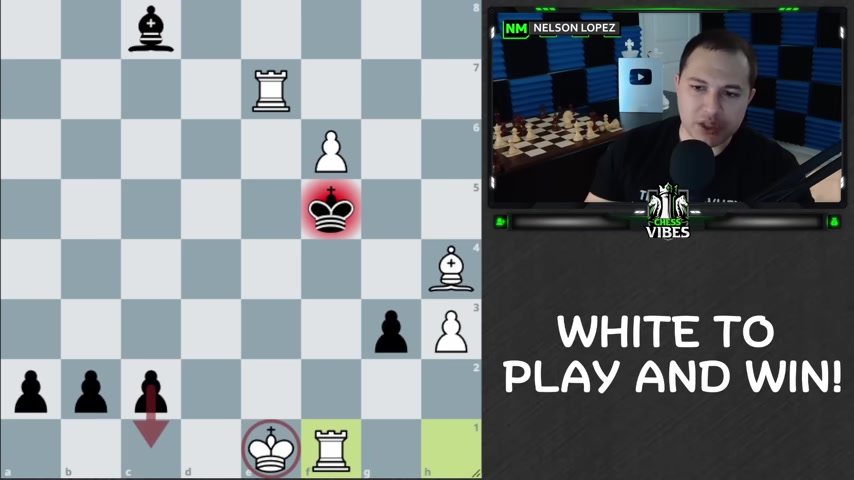
So what move can black play besides moving the king ?
That's right on pass .
So if you don't know whenever a pond advances two squares and lands side by side , another pawn , that pawn has the option to capture it as if the pawn only advanced one square , right ?
And so we can do this if we're black and take the pond and things are looking pretty good for black .
Now , you kind of eliminated that immediate check main threat , you got rid of the pawn and now it's back uh to white to figure out what to do next .
So again , if you would like to pause , what do you think white's best move is in this position ?
Well , if you had a chance to look at that rook to F one looks like a very tempting move because you're putting the king in check , you're bringing another piece over and it's almost the right move except you don't deal with your king and you don't deal with the fact that you still have the queens coming with check .
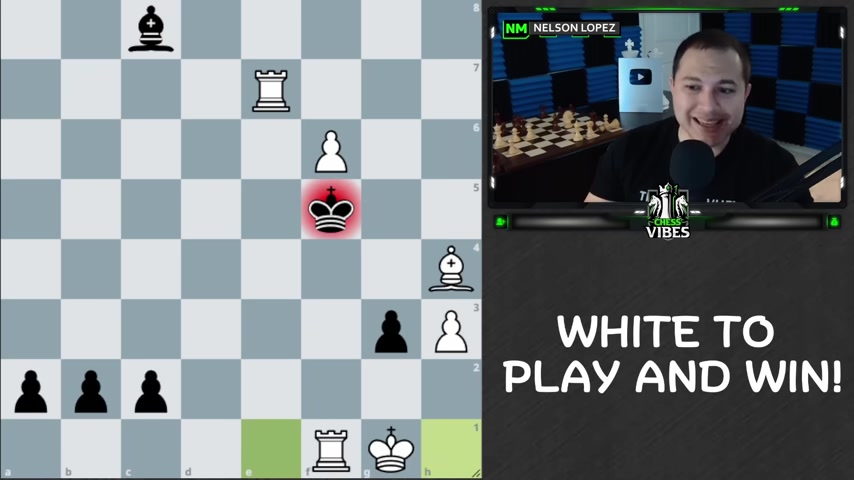
So the move that you need to play in this position is castling kings side because you still get the rook on F one .
And at the same time , you get your king a little bit safer .
It buys you some time so that black's queens aren't putting you in check right away , right ?
So this is the move .
And now we can see the rooks are lined up .
The bishop is here , the pawn is here again , black is forced to go king to G six .
And then from here , I think it's pretty straightforward .
We can follow up with a check rook to G7 and now black has two options .
King to age six and king to age five .
Now , king to h uh six is the better move .
And I'll show you why .
If the king goes to age five , we simply push our paw , we're getting ready to become a queen and black , regardless of the fact that they can get a queen , can't actually save themselves .
So for example , let's say they get a queen here .
We can simply play rook two H seven check .
And the reason we're doing this check is number one .
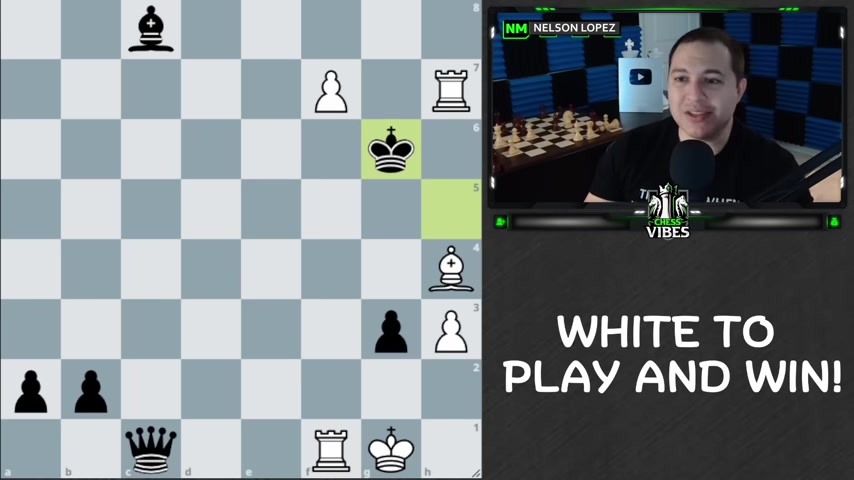
If the king moves , it has to go to G six , this is the only square and we have a really nice follow up .
So if you'd like to pause , what move do we play here ?
If you had a chance to look at that rook to F six is almost checkmate , except we can't move our rook .
It's pinned to our king .
So what we need to do is promote the pawn to not a queen a night and deliver the checkmate .
So that's pretty fun .
That's pretty cool .
And that's kind of the idea behind throwing in this rook check , black can't move there .
And if they don't move there , they can't move here .
They can't move here .
The only other move in this case would be to bring the queen there .
We simply take it .
We get a queen with check and we win the game .
Now , black could have also gotten a queen here but that doesn't really help with the problem .
We still play check .
They have to go here and again , the night comes in for the checkmate and then they also could have gotten this queen .
Um But again , same issue doesn't help with this checkmate .
All right .
So you can see how King Two H five going back to this original position here .
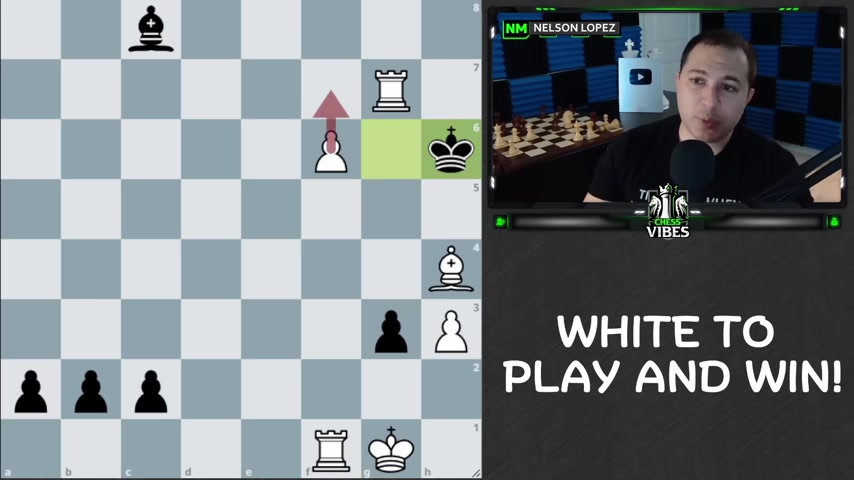
King two H five is , is not really a good option for black king to age six .
However , is much better because now we can't play Rick age seven check like we could before .
Otherwise the king just takes us right ?
And we have nothing .
We're running out of pieces .
So that's the uh that's the deal .
We can't go there .
So what do we do in this position if Rick H seven check is no longer a threat ?
Well , you might be tempted to say , I guess we just push our pawn and try to get a queen , right .
The problem with pushing the pawn is that black is going to play C one queen .
And remember we don't really have any checks here .
So we may as well continue with our plan , get the queen .
But now black simply takes this with check and we have two options if we take with the king .
Well , black is gonna get another queen with check and we're in trouble .
Now , the queen's involved and black is gonna be able to ultimately win .
We're losing that .
And if we take this way .
Well , black is still going to get a queen and pin our queen and force a trade .
And if we take black gets another queen and again , we will lose .
Right ?
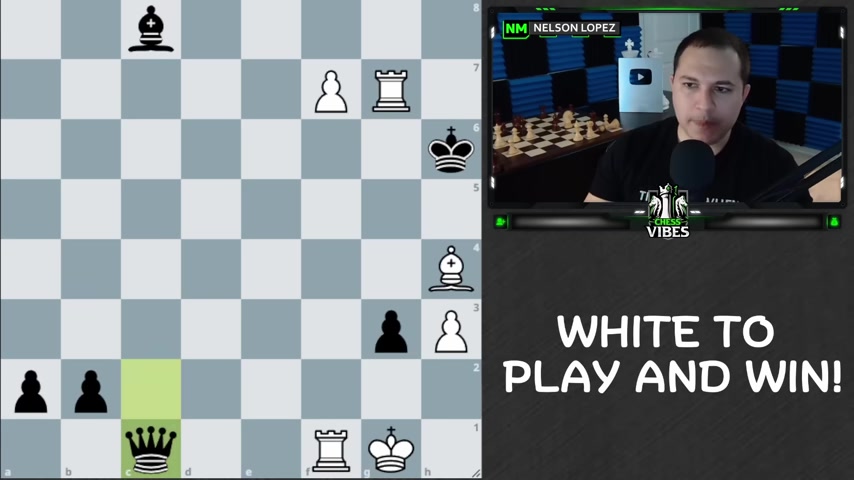
So you can see that is the problem with just getting the queen .
So on king to age six , we have to play this intermediate move bishop to G five check , forcing the king to go to age five .
And now we play F seven .
And you might be thinking , how does that like help with anything ?
Like what's , what does that accomplish ?
Here's what it accomplishes .
Remember ?
C one queen was a problem for us before .
Look at this , our bishop is now controlling that square .
You simply take it .
And what's black gonna do if they take us ?
Well , then we just take , they , they're running out of ponds , right ?
So that's one point .
Again , the queen here doesn't solve the problem uh that , that black has with their king .
Essentially we play here with the queen and yes , they can take here .
But now they can't get a queen because the pawns aren't defending each other .
OK ?
So that's another point .
And there's one more tricky point to this .
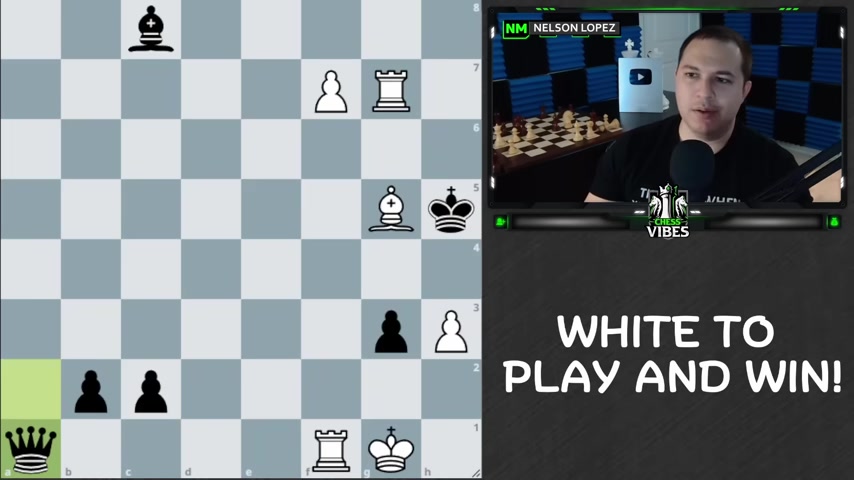
Um After we push is that on a one queen , we can simply get our queen .
Black's gonna go for this trade .
Black is gonna try to get another queen to force the trade .
And now we have a very nice move which essentially finishes off the game if you'd like to pause .
Well , the move is bishop to C one and we are blockading this .
So there's no more queen trade .
So we can use our queen now to go checkmate black's king .
We're also preventing the pawn .
And the only thing that black can do is kind of delay the game by throwing in some , some random checks .
So queen to B six check , we can move , black can try some different things .
Let's say bishop B seven check .
We can take here and there's this long line queen to D six check .
Bishop to F four .
A lot of things that black can try , but ultimately , they , they can't win .
So let's just say they try queen A three check .
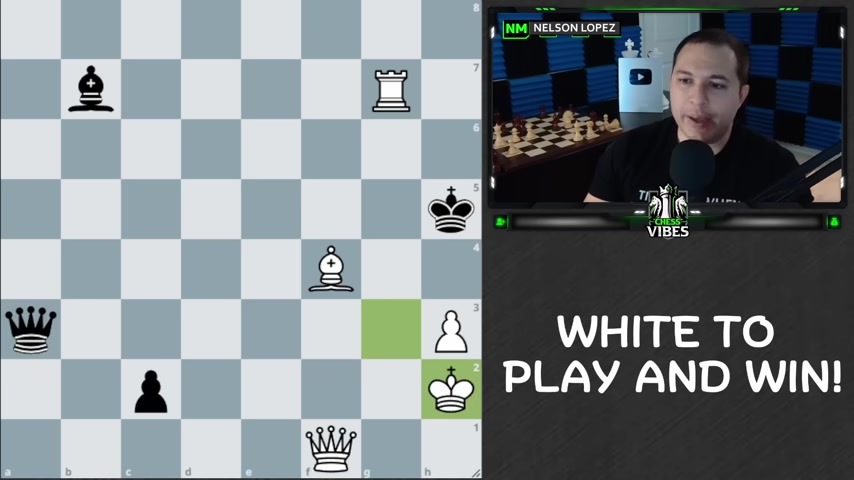
We can run over here and hide blacks out of checks .
Um And ultimately , they're gonna be getting checkmated .
It looks like the longest way that they could survive would be by playing queen A six .
But then we have queen to E one , queen to B five , queen to E six .
And ultimately , uh now black can't prevent the checkmate .
They can throw in this queen move or play some random queen G five doesn't really matter .
They're getting mated .
Uh Regardless , you can see we have threats here here uh here , here , just too many threats .
So , um all that to say , despite the fact , going back here that black had three pawns , all of which could become queens by throwing in the check castle and kings side bishop G five check first and then pushing the pawn .
We were able to ultimately stop all the pawns and deliver the checkmate on the king .
I hope you guys enjoyed that .
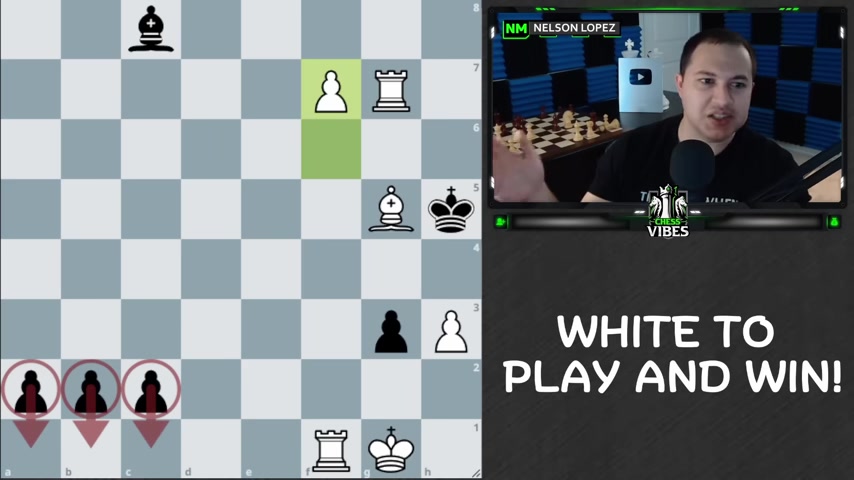
I think it's fascinating when there's puzzles where there's like all these ponds that can just become queens and it just doesn't save the person with all the extra pawns .
So I'll see you guys next time .
Stay sharp .
Play smart and take care .
Are you looking for a way to reach a wider audience and get more views on your videos?
Our innovative video to text transcribing service can help you do just that.
We provide accurate transcriptions of your videos along with visual content that will help you attract new viewers and keep them engaged. Plus, our data analytics and ad campaign tools can help you monetize your content and maximize your revenue.
Let's partner up and take your video content to the next level!
Contact us today to learn more.